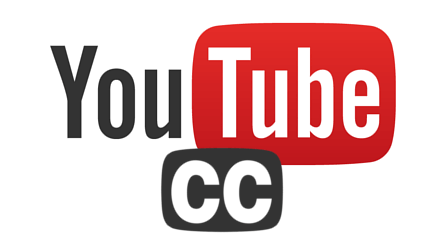
The Technology Behind YouTube's Auto-Captioning System: A Deep Dive
Have you ever wondered how YouTube automatically generates captions for millions of videos? As the founder of Transcriptly, a platform dedicated to making video content more accessible, I've spent years studying and improving upon these technologies. In this comprehensive guide, we'll explore the fascinating world of automatic speech recognition (ASR) and how it powers YouTube's captioning system, while also sharing insights from our own experience in developing professional transcription services.

The Core Technology: Automatic Speech Recognition
At its heart, YouTube's auto-captioning system relies on sophisticated ASR technology, powered by Google's speech recognition technology. This system converts spoken language into written text through several key components, similar to current popular AI-powered transcription service:
1. Audio Processing
- Advanced noise reduction algorithms that can distinguish between speech and background noise
- Speech enhancement techniques that improve clarity in challenging environments
- Intelligent audio segmentation that identifies speech segments and silence
2. Speech Recognition Engine
- Deep neural networks trained on millions of hours of speech data
- Context-aware language models that understand natural language patterns
- Adaptive acoustic models that can handle various accents and speaking styles
3. Post-Processing
- Smart punctuation prediction based on speech patterns and context
- Context-aware capitalization rules
- Intelligent corrections that consider the overall meaning of the content
The Evolution of YouTube's Captioning
YouTube's captioning system has evolved significantly since its introduction in 2009, as documented in YouTube's official blog. Here's a timeline of key developments:
- 2009: Basic speech recognition with limited accuracy, primarily focused on English content
- 2015: Introduction of neural network-based recognition, improving accuracy by 30%
- 2019: Implementation of transformer-based models, enabling better context understanding
- 2022: Integration of large language models for better context understanding and multilingual support
Current Challenges and Solutions
Despite impressive advancements, automatic captioning still faces several challenges that we've addressed in our solutions:
1. Accent and Dialect Recognition
- Solution: Training on diverse datasets from various regions
- Implementation of accent-specific models that adapt to regional speech patterns
- Continuous learning from user corrections and feedback
2. Background Noise
- Solution: Advanced noise filtering algorithms that can identify and remove specific types of noise
- Context-aware speech enhancement that preserves important audio cues
- Adaptive processing that adjusts to different recording environments
3. Multiple Speakers
- Solution: Advanced speaker diarization that can identify and track different voices
- Voice fingerprinting technology that creates unique profiles for each speaker
- Context-aware speaker identification that improves with ongoing use
How Transcriptly Enhances YouTube Captions
At Transcriptly, we've built upon these technologies to offer even more powerful features through our comprehensive platform:
- Multi-language Support: Support for over 10 languages with specialized models for each
- Custom Vocabulary: Industry-specific terminology recognition for technical content
- Real-time Processing: Instant caption generation with minimal latency
- Manual Editing: Intuitive correction interface with smart suggestions
- Export Options: Multiple format support including SRT, VTT, and TXT
The Future of Auto-Captioning
The future of automatic captioning looks promising with several emerging trends that we're actively developing at Transcriptly:
1. AI-Powered Improvements
- More accurate context understanding through advanced language models
- Better handling of technical terms and industry-specific vocabulary
- Improved speaker identification with continuous learning capabilities
2. Real-time Applications
- Live streaming support with minimal delay
- Instant translation capabilities for global audiences
- Interactive caption editing during live events
3. Accessibility Features
- Enhanced readability options for different user needs
- Custom styling capabilities for better visual presentation
- Seamless integration with screen readers and assistive technologies
Best Practices for Content Creators
To get the most out of auto-captioning systems, we recommend following these guidelines from our content creator resources:
1. Audio Quality
- Use high-quality microphones with noise-canceling features
- Minimize background noise through proper recording setup
- Maintain consistent volume levels throughout the recording
2. Content Preparation
- Speak clearly and at a moderate pace for better recognition
- Use proper pronunciation of technical terms
- Avoid overlapping speech and interruptions
3. Post-Processing
- Review and edit captions using our professional editing tools
- Add proper punctuation for better readability
- Ensure timing accuracy for perfect synchronization
Conclusion
YouTube's auto-captioning system represents a remarkable achievement in speech recognition technology. While it's not perfect, continuous improvements in AI and machine learning are making it increasingly accurate and reliable. At Transcriptly, we're proud to contribute to this evolution by providing enhanced captioning solutions that make video content more accessible to everyone.
Whether you're a content creator, educator, or business professional, understanding these technologies can help you create more accessible and engaging content. The future of video accessibility is bright, and we're excited to be part of this journey.
Ready to enhance your video content with professional captions? Try our YouTube Transcript Generator today!
Have questions or suggestions? Join our Discord community. We're always here to help!